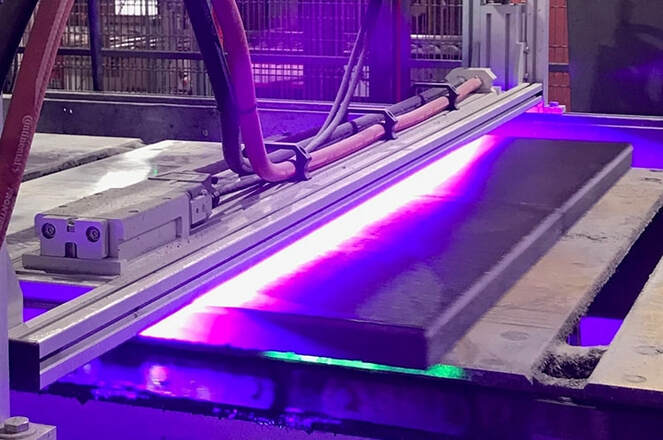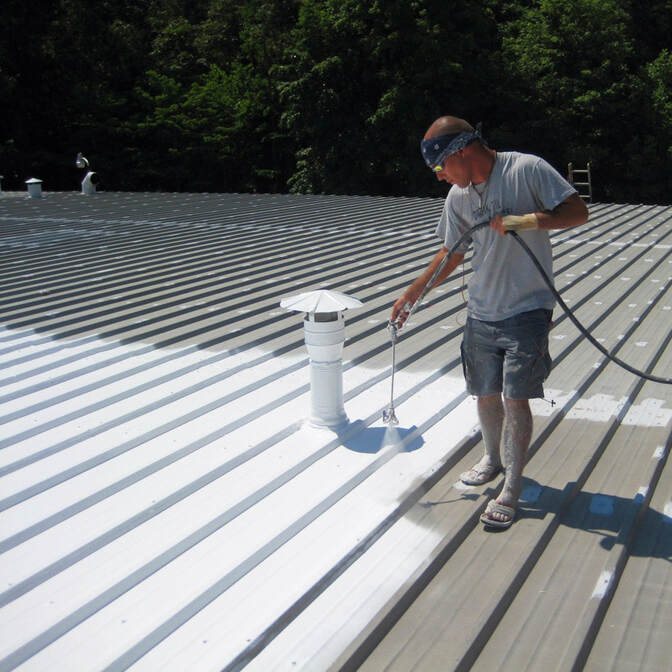|
In the world of coatings, innovation and advancement are essential to meet the evolving needs of various industries. One such innovation that has gained significant traction in recent years is Radiation Curable Coating solutions. These coatings offer enhanced performance characteristics, making them highly desirable for a wide range of applications.
UV-curable coatings utilize ultraviolet (UV) or electron beam (EB) radiation to initiate a chemical reaction that results in the rapid curing of the coating. This unique curing mechanism offers several advantages over traditional solvent-based or thermal-cured coatings. One of the primary benefits of UV-curable coatings is their exceptional speed of curing. Unlike conventional coatings that require hours or even days to fully cure, UV-curable coatings cure almost instantaneously upon exposure to the radiation source. This rapid curing not only increases productivity but also allows for faster production cycles, reducing downtime and increasing overall efficiency. Additionally, Radiation Curable Coatings are known for their superior hardness and durability. The curing process creates a highly crosslinked polymer network, resulting in coatings that exhibit excellent resistance to abrasion, chemicals, and UV radiation. This enhanced durability makes UV-curable coatings ideal for applications that require long-lasting protection, such as automotive coatings, electronics, and industrial equipment. Moreover, these coatings offer exceptional adhesion to various substrates, including metals, plastics, glass, and wood. The rapid curing process ensures that the coating forms a strong bond with the substrate, minimizing the risk of delamination or peeling. This adhesion capability allows for broader application possibilities, as UV-curable coatings can be used on a wide range of materials. UV-curable coatings are also known for their environmentally friendly nature. Unlike traditional solvent-based coatings, which often release volatile organic compounds (VOCs) into the atmosphere, Radiation Curable Coatings are typically solvent-free or low in VOC content. This characteristic not only reduces environmental impact but also contributes to a healthier and safer work environment for operators. Furthermore, the versatility of UV-curable coatings is a significant advantage. They can be formulated to achieve various properties, such as high gloss, matte finishes, or specific functional characteristics like scratch resistance or anti-fouling properties. This flexibility allows for customization and tailoring of coatings to meet specific performance requirements for different industries and applications. The applications of UV-curable coatings are diverse and continually expanding. In the automotive industry, these coatings are used for exterior body panels, interior trims, and even adhesives. In the electronics industry, Radiation Curable Coatings provide protection and insulation for printed circuit boards, ensuring reliable performance. Additionally, UV-curable coatings find applications in packaging, flooring, furniture, and many other sectors. It is worth mentioning that the adoption of UV-curable coatings is not without challenges. The initial investment in UV or EB curing equipment can be significant, and there may be a learning curve for operators transitioning from traditional coating systems. However, the long-term benefits of improved performance, increased productivity, and environmental sustainability often outweigh these initial hurdles. Radiation Curable Coating solutions offer a range of advantages that make them an attractive choice for enhanced performance in various industries. The combination of rapid curing, exceptional durability, adhesion, and environmental friendliness positions these coatings as a viable solution for manufacturers seeking to optimize their coating processes and improve product quality. As technology continues to advance, we can expect further innovations in UV-curable coatings, opening up new possibilities and applications across multiple sectors.
0 Comments
In the world of coatings and surface protection, new technologies are constantly emerging to enhance durability, aesthetics, and performance. One such innovation that has been making waves is Elastomeric Coating. These coatings offer a new dimension of protection for a wide range of surfaces, providing numerous benefits and advantages over traditional coatings.
Flexible coatings are unique in their ability to stretch and recover, thanks to their elastic properties. They are formulated using a combination of polymers, fillers, and additives that create a flexible and durable coating. Unlike rigid coatings, which can crack and peel over time, flexible coatings can withstand the natural movements and expansions of the surfaces they protect, ensuring long-lasting performance. One of the key benefits of flexible coatings is their exceptional waterproofing capabilities. These coatings create a seamless barrier that prevents water penetration, even in the most challenging environments. Whether it's a roof, a concrete surface, or a bridge, Elastomeric Coatings can effectively seal and protect against water damage, such as leaks, cracks, and corrosion. This ability to provide superior waterproofing is particularly valuable in areas prone to heavy rainfall or extreme weather conditions. Moreover, flexible coatings offer excellent resistance to UV radiation. The sun's harsh rays can cause significant damage to surfaces, leading to fading, discoloration, and degradation. However, flexible coatings are specifically designed to withstand prolonged exposure to UV radiation, ensuring that the protected surfaces retain their appearance and structural integrity over time. This UV resistance makes flexible coatings ideal for outdoor applications, such as building facades, decks, and parking structures. Another noteworthy advantage of Elastomeric Coating is their ability to bridge cracks and gaps in surfaces. Due to their flexibility, these coatings can accommodate substrate movements and effectively seal any existing cracks or gaps. This feature is particularly valuable for concrete structures, where cracks can develop due to factors such as temperature changes, settling, or heavy loads. By preventing further water infiltration and protecting against the ingress of harmful substances, flexible coatings help extend the lifespan of structures and reduce maintenance costs. Furthermore, flexible coatings offer enhanced energy efficiency. These coatings possess excellent insulating properties, reducing thermal conductivity and heat transfer. By applying flexible coatings to roofs and walls, building owners can significantly improve the energy efficiency of their properties. The coatings act as a thermal barrier, helping to keep the interior spaces cooler in summer and warmer in winter. This increased energy efficiency not only lowers utility bills but also contributes to a more sustainable and environmentally friendly building design. In terms of application versatility, Elastomeric Coatings shine as well. They can be applied to various substrates, including concrete, metal, wood, and even certain plastics. This adaptability allows for a wide range of applications across different industries. From residential and commercial buildings to infrastructure projects, flexible coating offer a reliable and effective solution for surface protection. Flexible coatings bring a new dimension of protection to the world of coatings and surface treatments. Their elastic and flexible nature, combined with exceptional waterproofing, UV resistance, crack-bridging capabilities, and energy efficiency, make them a compelling choice for a multitude of applications. As technology continues to advance, Elastomeric Coatings are likely to become even more advanced, providing further improvements in performance, durability, and sustainability. Whether it's safeguarding a building from the elements or enhancing the longevity of infrastructure, flexible coatings are paving the way for a new era of surface protection. |
AuthorWrite something about yourself. No need to be fancy, just an overview. Archives
July 2023
Categories
All
|


 RSS Feed
RSS Feed
